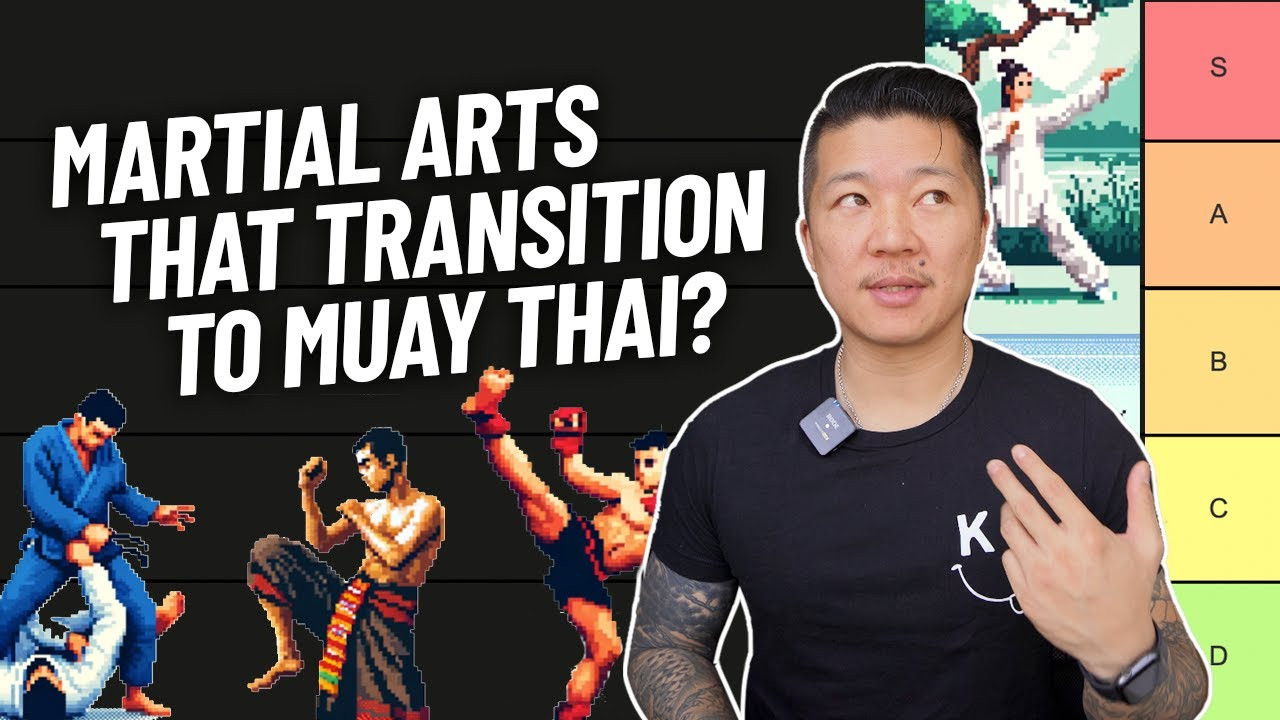Which Martial Arts Transitions Are Best for Muay Thai

As Muay Thai grows in popularity, more and more people with martial arts backgrounds have begun to seriously think about either cross-training with Muay Thai or becoming exclusively Muay Thai fighters. While it’s safe to assume that having a martial arts background is not going to work against you as you learn Muay Thai, some people will have an easier time transitioning than others.
Alby Tam of Combat Culture in San Francisco explored this concept at length in the above video, and even created a tier list indicating which martial arts are most similar to Muay Thai, thereby allowing for a smoother transition. His rankings are:
- S: The S tier can stand for a lot of things, but its use here translates into martial arts with the smoothest transition into Muay Thai with few if any adjustments.
- A: Adjustments needed.
- B: Bigger adjustments.
- C: Comparable to no experience.
It’s worth emphasizing here that these rankings are about transitioning to Muay Thai from another martial art. Most compatible martial arts with Muay Thai for MMA training would be an entirely different list. In that list, judo, jiu-jitsu, and other disciplines that rely heavily on either throws or ground fighting would be at the top of the list, since Muay Thai fighters are extremely formidable strikers.
S Tier
Martial arts included:
- Kickboxing
- Lethwei (Burmese boxing)
- Sanda
Muay Thai is very similar to these three martial arts. With kickboxing, there is less of an emphasis on clinching and many kickboxing organizations prohibit the use of elbows, which are allowed in Muay Thai. With Lethwei, the only real difference is that Lethwei allows headbutts, which are not allowed in Muay Thai. Sanda is very similar to Muay Thai, but fighters with this background will have to adjust how they strategize because the rule sets are slightly different and the scoring in Sanda prioritizes takedowns, which is not the case with Muay Thai.
With the exception of those subtle differences, the similarities between these martial arts will allow for a fairly seamless transition.
A Tier
Martial arts included:
- Kyokushin karate
- Sambo
- Savate
The differences between Muay Thai and these three martial arts are more significant. It’s not just the rule sets and strategies that are different; it’s the entire approach to fighting. Perhaps the closest relative to Muay Thai in this tier is savate, as there is boxing, kicks, and sweeps. One major change is how you kick, since Muay Thai uses the shin while savate uses the foot. Also similar is Kyokushin karate, since it involves sparring in the pocket and learning how to take a hit. However, punches to the head are prohibited, so it may take some time to adjust both offensively and defensively to that change. Sambo is a bit further removed from Muay Thai. While it allows striking, the focus tends to be more on grappling.
Fighters with backgrounds in these martial arts will need to make adjustments to the mechanics of their strikes but should have an easy time transitioning.
B Tier
Martial arts included:
- Boxing
- Freestyle Wrestling
- Greco Roman Wrestling
- Kung Fu
- Shotokan karate
- Taekwondo
The B tier is where you start to see some major differences between Muay Thai and other martial arts, though people with these backgrounds will still have a leg up on people with no experience in any martial art. With martial arts like taekwondo, Shotokan karate, and kung fu, there are a variety of strikes, but the technique, stance, and overall strategy while fighting are very different from Muay Thai. It may be difficult to break out of those habits and patterns, which may disrupt the learning process. With Western boxing, the footwork, hand strikes, and head movements may be very similar, but learning how to throw and defend against a kick may take some time to learn. The hand fighting and clinching in wrestling does have parallels to Muay Thai, but the absence of striking makes them clearly B tier.
Bigger adjustments will be needed for fighters with backgrounds in these martial arts, but they will still have an advantage over an average athlete who is entirely new to martial arts.
C Tier
Martial arts included:
- Aikido
- Capoeira
- Jiu-jitsu
- Judo
- Sumo
- Tai Chi Chuan
- Wing Chun
- Wushu
Fighters who come to the first Muay Thai class with one of these backgrounds will likely find that their skills do not translate very well. That said, you will likely have very good spatial awareness, solid reflexes, better than average endurance and/or strength, an ability to physically strategize, and a solid foundation upon which to build, and that will likely help you learn Muay Thai faster than your average person. However, it’s still going to take a lot of adjusting to get used to Muay Thai.

